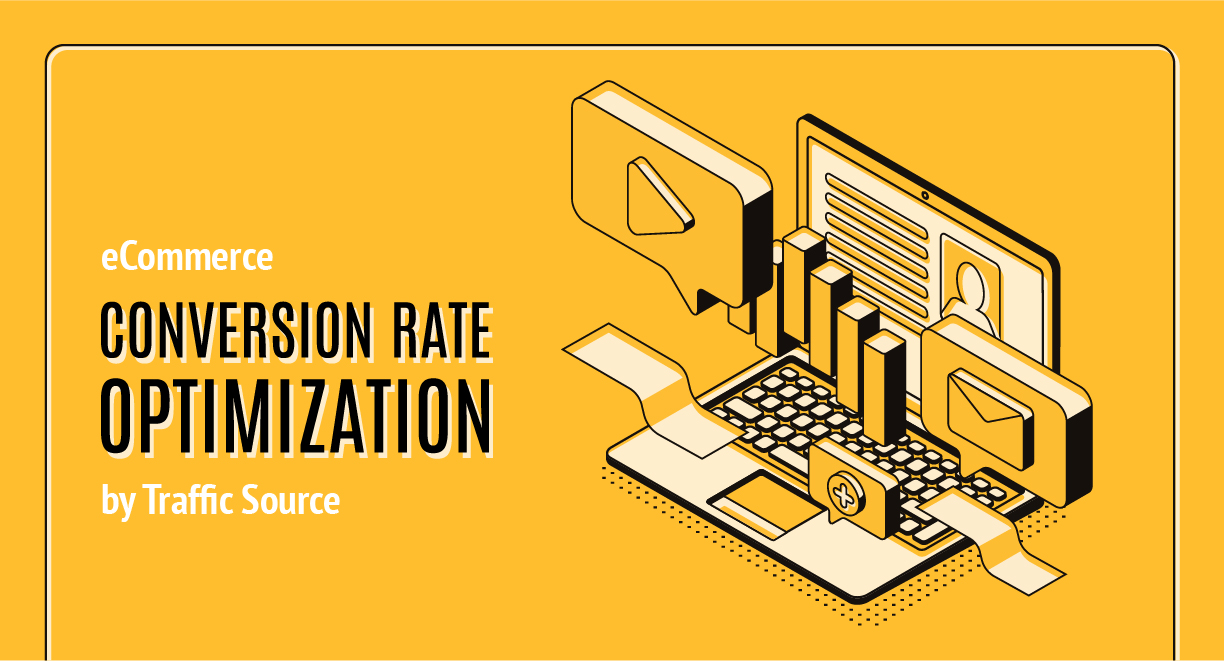Ever heard the phrase “Don’t put all your eggs in one basket”? Well, that’s pretty much the moral of the story here.
For any eCommerce venture, it’s essential to diversify your traffic sources so that when the conversion rate of one takes a dip, the others still drive traffic to your store.
Think about it this way.
When an organization wants to advertise, they don’t just buy a regular spot on the radio. They buy ad space on billboards, in public bathrooms, on TV, on every platform they can think of. In doing so, they capture the attention of multiple audiences, some of which overlap.
With that in mind, let’s look at some actionable steps you can take to improve your conversion rate across multiple traffic sources.
1 – Know Your Target Demographic
Different traffic sources cater to different demographics, so it’s in your best interest to tailor your marketing appropriately. For example, according to Statista, more than 50% of Instagram users are 18-34 years old, while almost 60% of Twitter users are between 25 and 49 years old. Knowing your audience will do a lot to increase your conversion rates between traffic sources.
To provide another example, the average Facebook user is between 18 and 34 years old and is male. By posting content that appeals to the dominant demographic for each traffic source, your conversion rates will inevitably increase.
2 – Create Continuity Between Your Traffic Source and Your Webpage
It’s all well and good to create enticing posts that drive traffic to your site. But in order to retain the user’s interest, there must be at least some continuity.
For example, if you advertise a 15% off sale for a certain product via social media, then the embedded link should take users to that product’s page with the deal applied. If clicking a link that advertising something specific takes the user to your generic homepage, they are less likely to take any further action.
There must be a logical, linear flow of engagement, or else the user will lose interest.
3 – Bear in Mind Readiness to Purchase for Each Traffic Source
Depending on where your traffic is coming from, the conversion rate will vary. This is because people use different platforms for different purposes.
When someone is on Twitter or Instagram, they are there to be social. This doesn’t mean that social media advertising is ineffective, it just means you must work harder to get their attention. In the same breath, traffic from Google searches have higher conversion rates, because the user is already prepared to buy.
With that in mind, try to prioritize incentives and attention-grabbing visuals on your traffic sources where users don’t tend to shop.
4 – Establish a Clear Purpose for Your Ads
Online ads serve a variety of purposes, from establishing your brand to driving sales.
You should have a clear idea of what the purpose of an ad is before developing it.
For example, if you want to improve your social media presence, post ads that focus on brand awareness. These can be more general, informing the public of what you do and why you do it best.
If you want to increase conversion rates, your ads should be suited to that purpose. They should incentivize your audience to take action with sales, rewards, discounts, and more. These ads assume awareness on the part of the user and inspire them to buy.
5 – Make the Best Use of Email Marketing
Email marketing is a tricky thing to get right. It is all too easy to be overzealous and spam customers with daily marketing emails. This is a sure-fire way to spike your unsubscribe rates. You shouldn’t be sending out more than two marketing emails per week, so customers don’t feel like they’re drowning in advertising.
Furthermore, timing is key. Research indicates that the best days to send marketing emails are Tuesdays and Thursdays, while weekends are a bust. Open and click-through rates are also best between 8:00 am and 12:00 pm.
6 – Be Accessible
People don’t enjoy struggling or waiting when they’re looking for information. If a user has to click through two or three different pages to find your contact information, they are more likely to abandon the search, which means a potentially lost sale.
Display your phone number, email address, social media links, and other communication channels prominently so people can get hold of you easily.
7 – Don’t Slack on Your SEO
SEO is something that requires constant attention in eCommerce. Keywords go out of date quickly, content ages, and customer habits shift.
Make sure you’re generating relevant content on a regular basis and use Google’s Keyword Planner to keep your search ranking high. Given that Google search is a traffic source with a high conversion rate, you don’t want your SEO to slip.
8 – Test Your Page on Cheaper Devices
If your page loads well and looks good on an iPhone 13 Pro Max, that’s great! But a large portion of your potential customers use older devices to do their browsing.

If your platform loads slowly on older smartphones, tablets, or laptops, that’s a huge chunk of the market you’re alienating.
Your load time should always be a priority, as slow pages get abandoned quickly. However, try testing your site out on an Android phone that’s more than a year or two old. You’ll soon see if you’ve created a high-converting website or one that needs some tweaking.
9 – Work on Your Social Media Presence
On average, people spend over two hours per day on social media.
Social media is also one of the primary means of communication people use to contact businesses. Therefore, having a strong social media presence means more than just posting regularly. It means running promoted, targeted ads, replying to queries immediately, being responsive to reviews, and responding to post comments.
All of this can be a full-time job for a large organization, so make sure you have at least one person on it at all times. An unresponsive social media profile is unlikely to have a high conversion rate.
It’s Your Move
Knowing how to optimize your conversion rate is an essential skill in eCommerce. Now you know how to go about doing so, how will you apply this advice in your business?


0 Comments